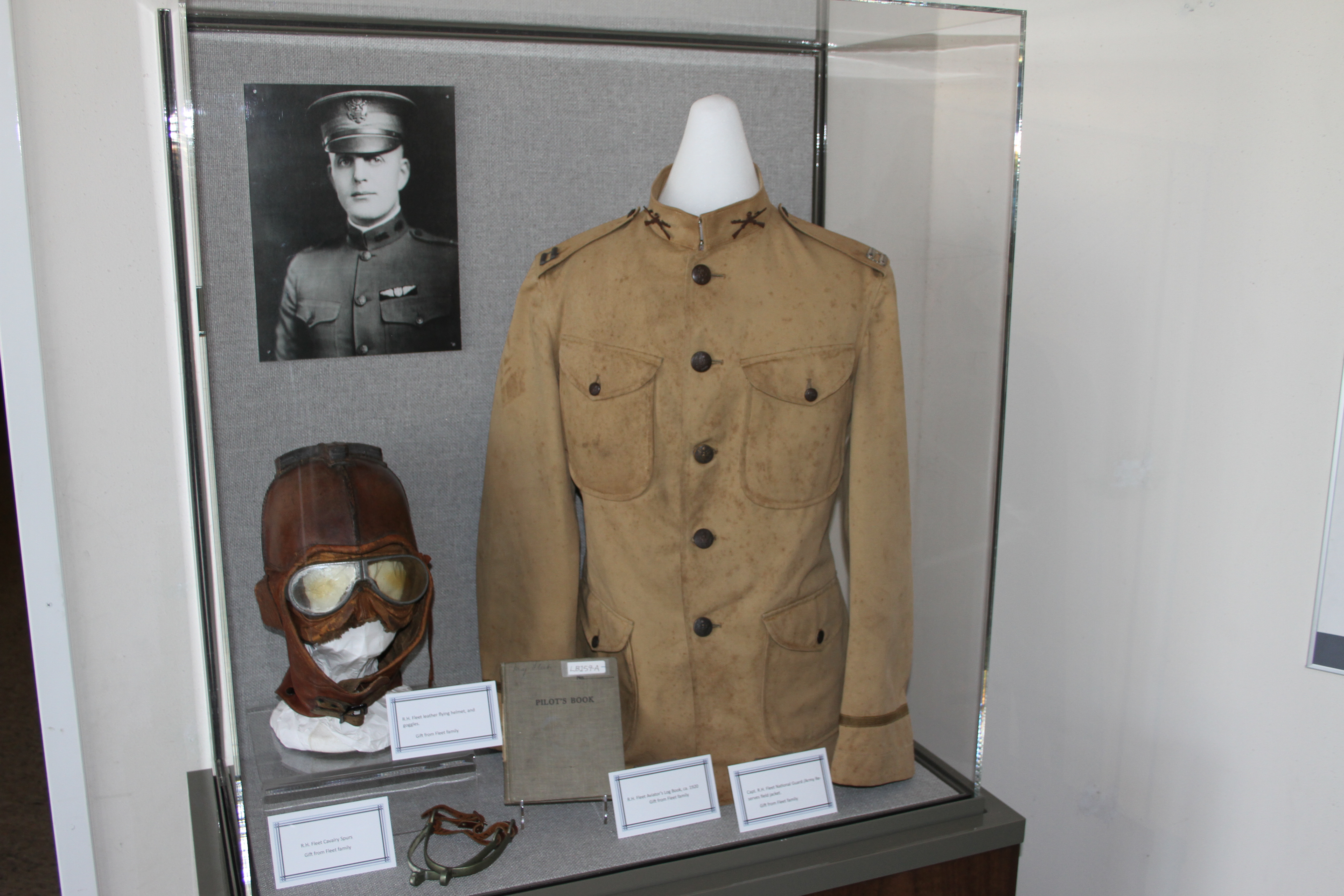The San Diego Air & Space Museum is proud to announce the re-opening in September of an improved exhibit honoring Reuben H. Fleet.
The exhibit includes photos and models of several iconic Consolidated/Convair aircraft, as well as articles worn by Fleet the aviator, including a flight jacket, goggles, helmet, stirrups and his pilot’s logbook. The exhibit is located adjacent to the Consolidated PT-1 “Trusty” trainer, near the PSA exhibit.

Reuben Hollis Fleet holds a special place in the history of aviation, not only in San Diego but across the globe as well. He is one of the earliest honorees in the International Air & Space Hall of Fame, having joined this select group in 1965.
In 1906, he graduated from the Culver Military Academy in Culver, Indiana. Called to active duty in early 1917, he attended aviation training at the Army Aviation School in San Diego. Upon receiving his pilot’s wings as military aviator No. 74, Capt. Fleet was assigned to Air Service Headquarters in Washington, DC, planning and supervising aircrew training. In testimony to his fine staff work, the program trained nearly 11,000 pilots by November 1918.
During his duty in Washington, Major Fleet was given the task of establishing the first U.S. Air Mail from Washington to New Yr. Within six days of this assignment, he had assembled the necessary modified Curtis JN-4s and the service was inaugurated on May 15, 1918.
In 1919, Major Fleet was reassigned to the U.S. Army Flight Test Center at McCook, Field, Dayton, Ohio, as business manager. It was during this time he acquired the experience which inspired him to enter the civilian aviation industry, leaving the service in late 1922 to begin his distinguished career as an aviation industrialist.
Acquiring the assets and engineering talents of the Gallaudet Aircraft Corporation and the Dayton-Wright Airplane Company, in 1923 he combined the two into a new firm to be known as Consolidated Aircraft. In a leased factory, the new company produced the Dayton-Wright series of training aircraft for the Army, but it wasn’t until he moved his business to the Curtiss Wright factory in Buffalo, NY, that Consolidated Aircraft began to takeoff.
Fleet designed and built the simple PT-1 “Trusty,” which turned out to be a huge success, putting Consolidated and Buffalo on the map.The great flying boats followed in 1929 with orders placed for the “Admiral” patrol bomber by the Navy and the “Commodore” series for the airlines (most notably Pan Am). It would be the “PBY” series of patrol bombers developed in 1935 however that would clinch the future for Consolidated Aircraft and cause the company to make a move to San Diego’s Lindbergh Field.
Throughout his life, Fleet was known as a pioneer and patriot. He believed in basic virtues such as personal integrity, self-reliance, devotion to duty, love of country and respect for truth. In the post war years, he devoted much of his time and fortune to works of philanthropy, contributing to hundreds of scholarship programs, a variety of charities, and what is now known as the Reuben H. Fleet Science Center in Balboa Park.
2001 Pan American Plaza, San Diego, CA
Phone: 619.234.8291
Información En Español
Contact Us
We would like to thank all our sponsors who help us make a difference. Click here to view all who help us.

The San Diego Air & Space Museum is a 501(c)(3) non-profit organization. Federal Tax ID Number 95-2253027.
